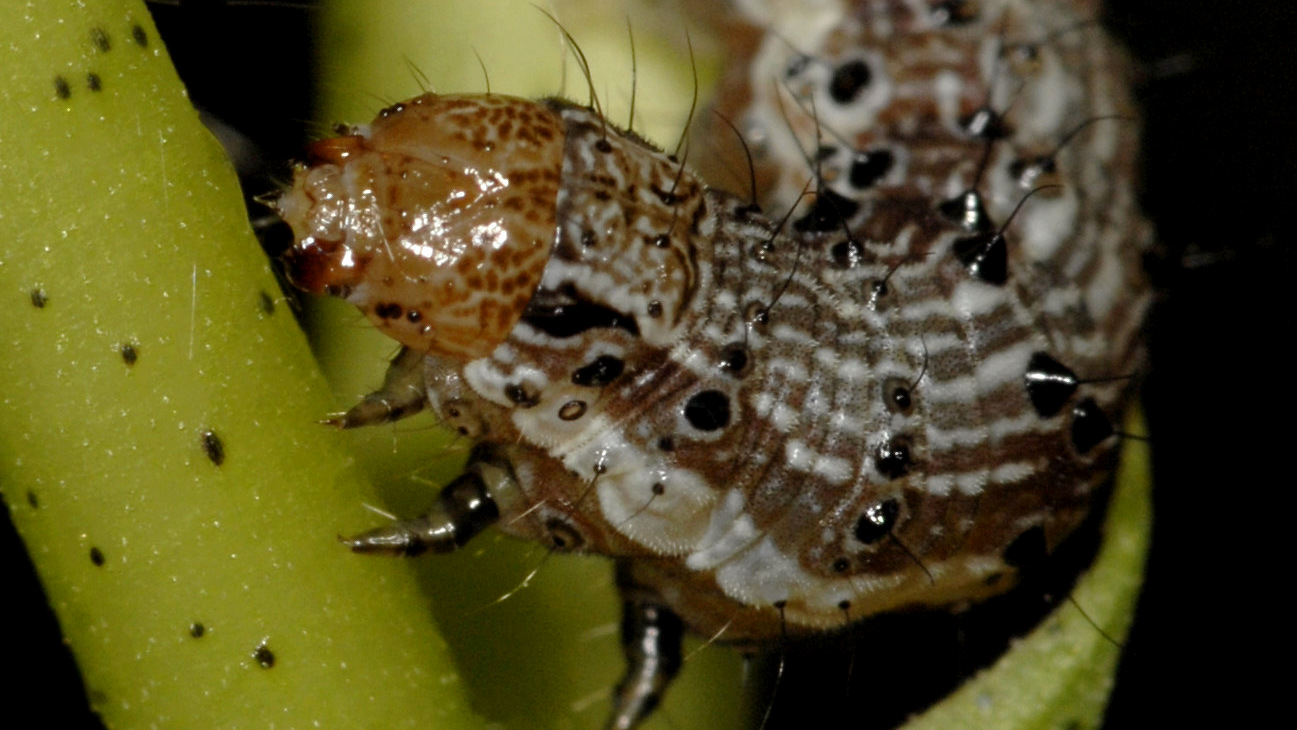A new study, funded by the U.S. government and published in the journal Nature Biotechnology, has added to the evidence that pest resistance to genetically modified (GM) crops has been rising dramatically for decades. The study, which examines 20 years of data, focused on a specific class of GM crops that have been bioengineered to produce insect-killing proteins naturally produced by the Bacillus thuringiensis (Bt) bacterium. The proteins, though often used on non-industrial farms as a form of organic pest control, were found to facilitate particularly rapid pest resistance when produced within GM crops.
In terms of its more specific findings, the researchers found that, out of 36 cases, 16 showed problematic instances of pest resistance that dramatically reduced the crop’s efficacy within five years of the crop’s introduction. The study also found that incidence of such cases has jumped in recent years, as only three such cases had been identified in 2005. Seventeen cases did not show pest resistance to Bt crops and three others were flagged as showing early warnings of resistance, meaning that pest resistance was statistically significant but had yet to dramatically affect crop yield.
The study also noted that pest resistance to Bt crops has begun evolving at a faster rate in recent years, as resistance to previously introduced strains breeds cross-resistance to other Bt proteins introduced in subsequent GM Bt crops.
In addition, the study – whose authors are supportive of GM crops overall – touted the effectiveness of the “high-dose/refuge strategy,” in which GM crops producing high doses of Bt proteins are interspersed among “abundant refuges” that consist of non-GM plants. This practice was found to dramatically slow the development of pest resistance. In other words, the study found that the only method that had shown success in inhibiting an increase in pest resistance was one that advocates using less GM crops and abundant amounts of non-GM plants.
One of the study’s authors, Bruce Tabashnik of the University of Arizona, argued that the ability to delay GM resistance, no matter how short-lived, was a boon to the agriculture industry: “We always expect the pests to adapt,” he said. “However, if we can delay resistance from a few years to a few decades, that’s a big win.”
Liz O’Neil of the UK-based group GM Freeze, argued that delaying GM pest resistance was hardly a big win, as it was merely delaying the inevitable onset of complete GM ineffectiveness. In a press release, she stated:
This study confirms a very simple truth: if you try to outwit nature, it’s evolution that wins. We already know that if you grow herbicide tolerant GM crops you get herbicide resistant weeds. Now we have clear confirmation that the pattern repeats itself with insecticide-producing GM Bt crops.”
GM crops linked to long list of negative effects

Bt crops have been a fixture in industrial agriculture for more than 20 years. Since their initial introduction in 1996, their use has become widespread, with more than 240 million acres of Bt crops — namely cotton, corn and soybeans — being planted in 2016 alone. Yet, ever since their introduction, Bt crops have been decidedly controversial for several reasons other than their link to a rapid increase in pest resistance, and consequent ineffectiveness.
For instance, the introduction of Bt crops in India – championed by the Gates Foundation — failed to bring any of the benefits farmers were promised, instead trapping many farmers in debt as their disappointing yields left them unable to pay for the expensive seeds and chemicals needed to cultivate GM plants. These burgeoning debt cycles have led to one of the largest suicide epidemics in the history of the world, with an estimated 300,000 Indian farmers having taken their own lives over the last 20 years.
In addition, the widespread use of GM crops has had dire consequences for other non-GM crops and the environment, due to the potential for cross-pollination contamination between GM and non-GM crops as well as the deleterious effects of GM crops and their associated agrochemicals on wildlife. Furthermore, consumption or use of GM crops has also been linked to a variety of human health issues.
However, it is ultimately the issue of pest resistance that suggests that GM crops are much more trouble than they are worth. The inevitability of pest resistance to GM crops, a fact acknowledged by the study’s authors, means that, over time, GM crops are bound to become much more ineffective than their less expensive and natural predecessors. With the long-term benefit to farmers being minimal, it is evident that continued use of GM crops primarily, if not exclusively, benefits the corporations that produce them.
Editor’s Note | The research paper referenced in this article, “Insect Resistance to Transgenic Crops: Second Decade Surge and Future Prospects,” was published on Oct. 10 in the October issue of Nature Biotechnology and is not yet available on online. DOI: 10.1038/nbt.3974
Top photo | The cotton bollworm caterpillar has evolved resistance to four Bt proteins produced by biotech crops. (Alex Yelich/University of Arizona)


